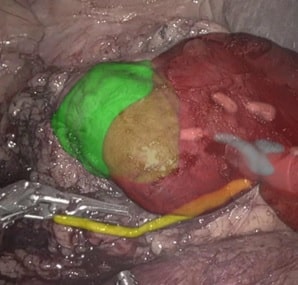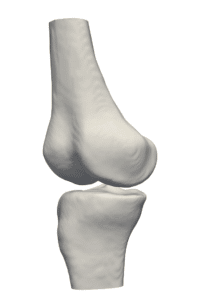RSIP Vision Launches a Pioneering AI Suite Providing Optimal Solutions to Key Tasks in Lung Surgery.
New technology offers critical information enabling pulmonary surgeons to perform state-of-the-art planning and procedures.
SILICON VALLEY, Calif., April 20, 2020 — RSIP Vision, a global leader in artificial intelligence (AI) and computer vision technology, announced today a new innovative AI-based suite of modules for pulmonary imaging, ideally developed for the interventional pulmonologist. Integrated in third party devices, the suite provides a complete software solution for lung surgery, in that it enables to give a better and more precise treatment to the patient.

Airways segmentation with AI
The main module of this suite provides physicians with a rich mapping of the lungs, by segmenting the airways on CT scans. This segmentation dramatically improves the planning and the performance of surgical procedures, by enabling the surgeons to locate by themselves all significant items, just as if they were using a GPS map. Lung mapping is a complex task, since segmentation becomes more challenging as the surgeon gets closer to the most distal airways. RSIP Vision’s lungs mapping module is able to identify the most sensitive airways and confers the surgeon the faculty to navigate the lung with full knowledge of all items.
Another module of this suite deals with segmentation of lung’s lobes and fissures. This module too provides the surgeon with precious help when planning the intervention and during the procedure itself. The precise segmentation of the lobes gives the surgeon all means to prevent the surgical tools from puncturing the visceral pleura, the very delicate membrane that covers the lung into its fissures. Pleura is frequently involved in chest trauma and preventing its damage is critical to a successful lung surgery. This module is based on a complex integration of data coming from various and different sources: fissures identification/segmentation, lobes and airways mapping as well as blood vessels analysis are key components of this process.
One other module identifies lesions in the lung. This is an essential practice that must be performed when planning or executing a pulmonary intervention. This module too largely relies on artificial intelligence to identify and classify all lesions according to their type and size, be they pure Ground-Glass nodules (GGNs) or solid and part-solid lesions.
This suite by RSIP Vision supports surgeons to effectively plan more controlled surgical procedure and secure and optimal use of their tools in the specific structure of the lung they are called to operate.
“As technology is rapidly developing, it became an integral part in the medical practice, aiding in complex and time-consuming processes. Physicians in all fields, both diagnostic and interventional, utilize new technologies in their daily work throughout clinics and departments. Pulmonary surgeons perform numerous procedures, mostly by endoscopic approach, which demands high precision performance. In the past, they relied on chest X-ray and endobronchial ultrasound to navigate to the target location in the lungs; both methods provided inaccurate navigation tool, which lead to undesired iatrogenic complications and morbidities to the patients. RSIP Vision innovative modules, in lung mapping and navigation tools, present a reliable solution to the above-mentioned challenges, enhancing the accuracy rates and decreasing complications,” says Dr. Rabeeh Fares, Radiologist; Department of Diagnostic Radiology, Sourasky Medical Center, Tel Aviv, Israel.






